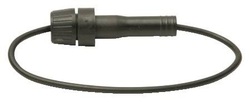- Home
- For the homeowner
- Safety
- Definitions
- Gas furnace
- Some error codes for gas furnaces
- Service sheet for the gas furnace
- gas furnace design
- The gas heat exchanger
- Dangerous conditions in gas furnaces
- Annual service of the gas furnace
- Repair procedures for gas furnaces
- Gas fireplace millivolt systems
- Oil furnace
- Setting gas input
- Quick tips for troubleshooting furnaces
- Troubleshoot
- Operation and troubleshoot furnace by manufacturer
- HVAC war stories blog
- Annual service of an oil furnace
- Oil furnace design
- Oil furnace troubleshoot
- Repair procedures for oil furnaces
- Gas code training
- Piping and connections
- FAG w pilot no fire
- Combustion analysis
- Electric furnace
- Air conditioner
- Refrigeration
- Heat Pump
- Boiler
- Ductwork design and troubleshoot
- Thermostats
- Diagnostic problems
- Tools
- Electric test meters
- Electrical diagram training
- Electrical symbols
- Single and 3 phase power systems
- Electric wiring solutions
- Transformer design and troubleshoot
- Electronic air cleaner
- Blowers and fans design & troubleshoot
- Humidity and humidifiers
- Furnace, Air Conditioner and part manuals
- Electric motors
- Run Capacitors
- Start capacitors
- Troubleshooting the capacitor
- Gas furnace short cycling
Control transformer design and troubleshoot
Furnace Transformer troubleshoot sequence

If there is no voltage read at the output of the transformer as read by a voltmeter, and power is available on the input side, the transformer has failed.
As a double check, an ohmmeter can be used. There probably will be 2 wires for the 24 volt side and 2 or more on the 120 volt side. The color code for the 120 volt side sometimes varies but usually will have one white and one black wire. The color code is written on the transformer(see left). Place the probes on the wires or terminals. The ohmmeter will read a resistance if the winding is good. Check both windings. Many transformers have a fuse on the 24 volt side. If the fuse is open, the ohmmeter will read no continuity. There is a probably a short in the 24 volt circuit. Replacement of the transformer will not solve the problem. The new transformer will also fail.
I recommend using a transformer without a built in fuse. An inline fuse may be installed.
The videos below explain transformer design and troubleshoot.
As a double check, an ohmmeter can be used. There probably will be 2 wires for the 24 volt side and 2 or more on the 120 volt side. The color code for the 120 volt side sometimes varies but usually will have one white and one black wire. The color code is written on the transformer(see left). Place the probes on the wires or terminals. The ohmmeter will read a resistance if the winding is good. Check both windings. Many transformers have a fuse on the 24 volt side. If the fuse is open, the ohmmeter will read no continuity. There is a probably a short in the 24 volt circuit. Replacement of the transformer will not solve the problem. The new transformer will also fail.
I recommend using a transformer without a built in fuse. An inline fuse may be installed.
The videos below explain transformer design and troubleshoot.
Sometimes, when working with air handlers and split system air conditioners, you may find it necessary to connect 2 control transformers to the same circuit. I do not recommend this if it can be avoided, but here is how to set them up if it is necessary.
inline fuse

The fuse installed should be 3 or 5 amp to match the original fuse.
When the new transformer is installed, if the new fuse blows, you have a short. The procedure here is first check all wiring. Many low voltage transformers have one side of the circuit hooked to chassis ground. If any wires are in contact with the chassis of the equipment, the fuse will blow.
If the wires are ok, follow the wires to the various components. Remove the wire from each component in turn with the power on and the thermostat calling for heat. Then place a fuse in the fuse holder. If it blows, with the wire removed from the component, the part is ok. Continue removing wires until the fuse does not blow. Then you have found the problem. In these furnaces, there are few components and a thorough job will find the problem. The key here is double check everything and be sure you are checking what you think you are. Back to troubleshoot
When the new transformer is installed, if the new fuse blows, you have a short. The procedure here is first check all wiring. Many low voltage transformers have one side of the circuit hooked to chassis ground. If any wires are in contact with the chassis of the equipment, the fuse will blow.
If the wires are ok, follow the wires to the various components. Remove the wire from each component in turn with the power on and the thermostat calling for heat. Then place a fuse in the fuse holder. If it blows, with the wire removed from the component, the part is ok. Continue removing wires until the fuse does not blow. Then you have found the problem. In these furnaces, there are few components and a thorough job will find the problem. The key here is double check everything and be sure you are checking what you think you are. Back to troubleshoot
